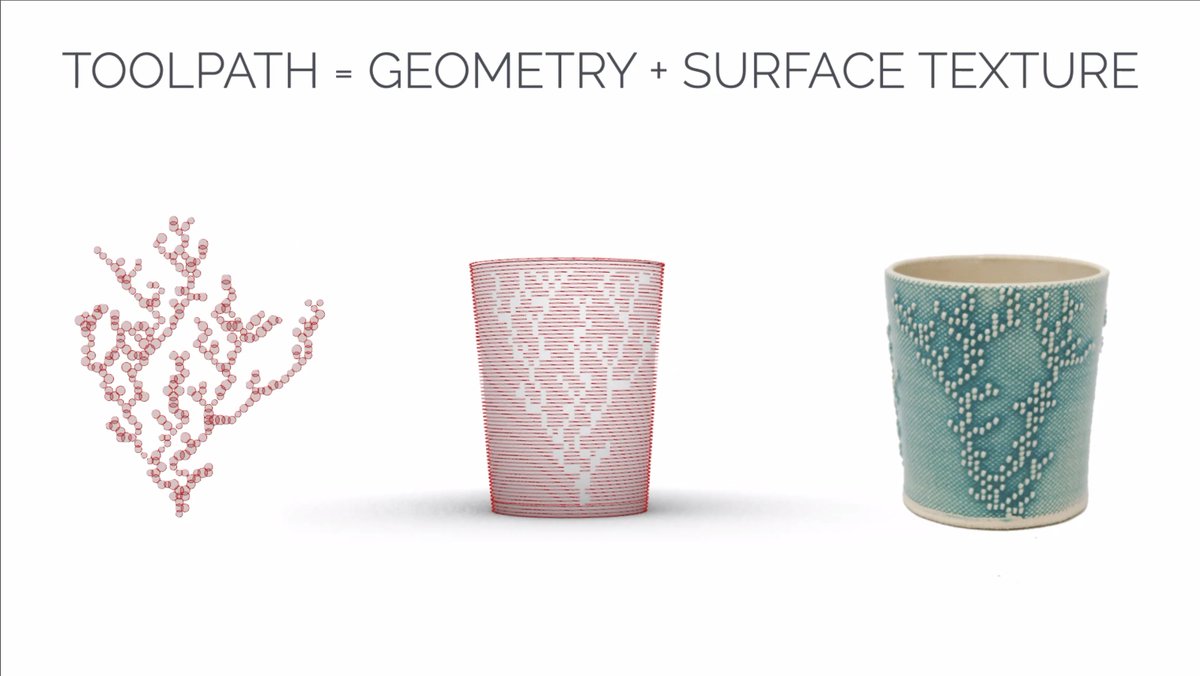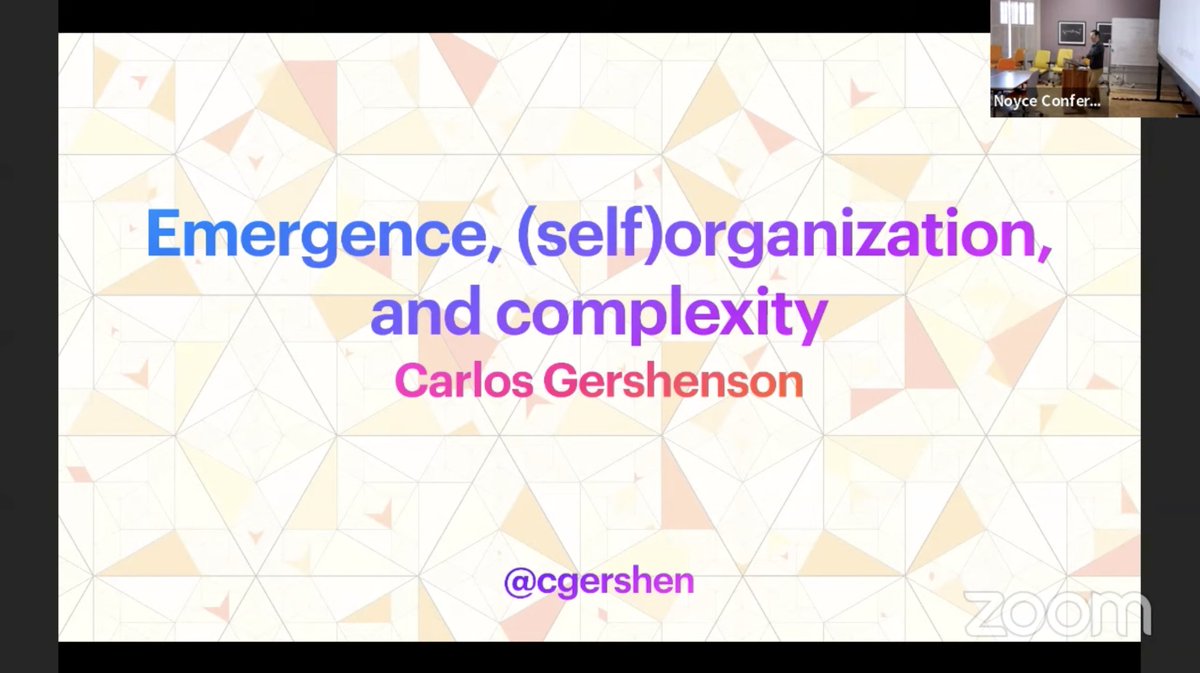
"We build the geometry directly by thinking about the PATH that our 3D printer takes. There's no intermediate slicing software [to render CAD as "2D" layers]."
- @leahbuechley, #3DPrinting clay with a 1.5 mm nozzle


- @leahbuechley, #3DPrinting clay with a 1.5 mm nozzle

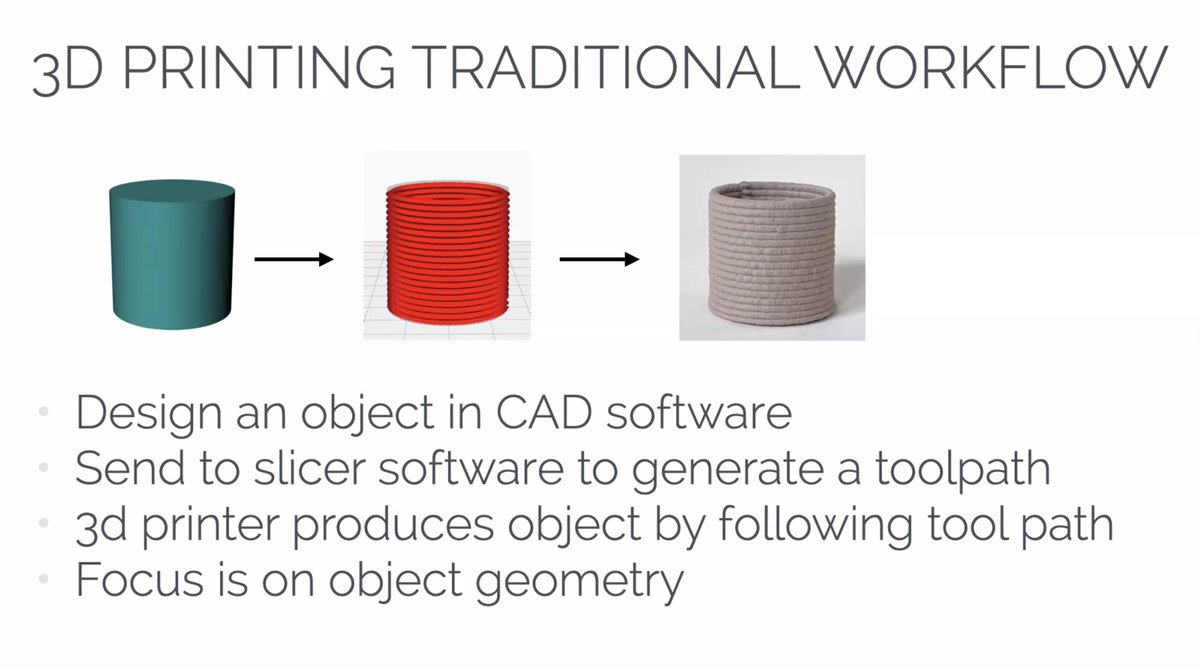

"You can start to think about surface textures - like spikes that you can't do with a traditional slicer. Or...here's a path that's a sine wave, but every other layer is rotated. Or...one creature is following THIS path, and the other is chasing it around."
#clay #3dprinting

#clay #3dprinting
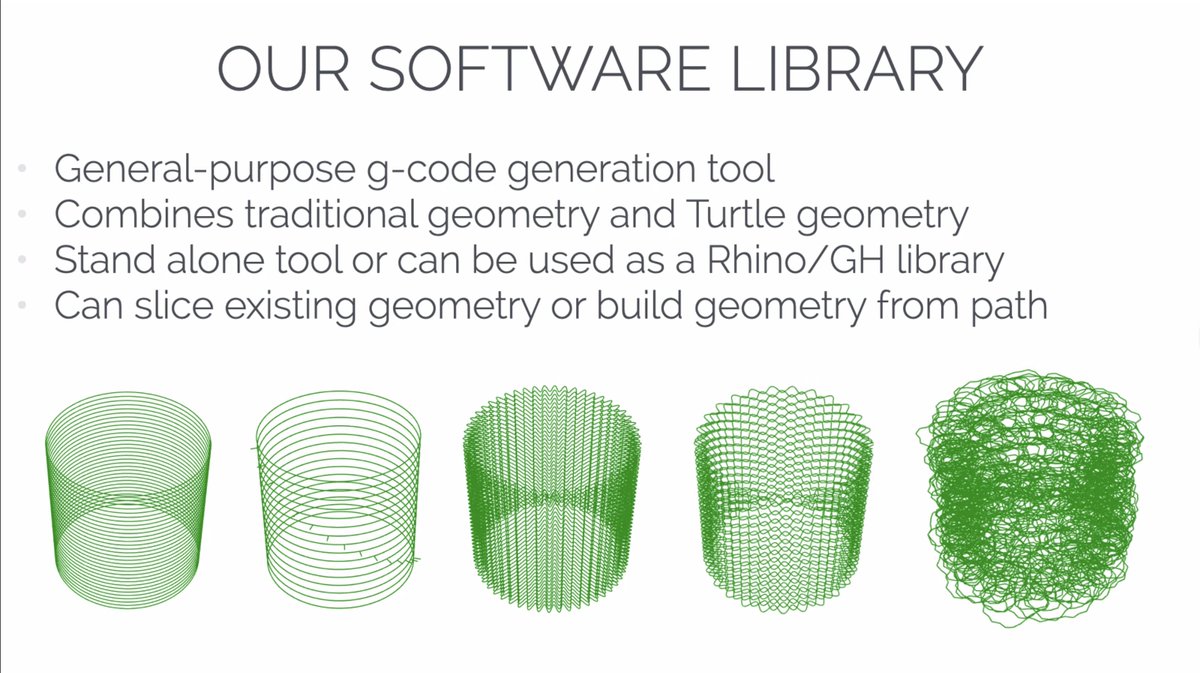

"In software, you control a lot of parameters sent to the machine. Each machine has certain physical constraints. And then finally, on the materials side there are A TON of variables. All of these things are interconnected."
@leahbuechley (@UNM) on #complexity and #clay
@leahbuechley (@UNM) on #complexity and #clay
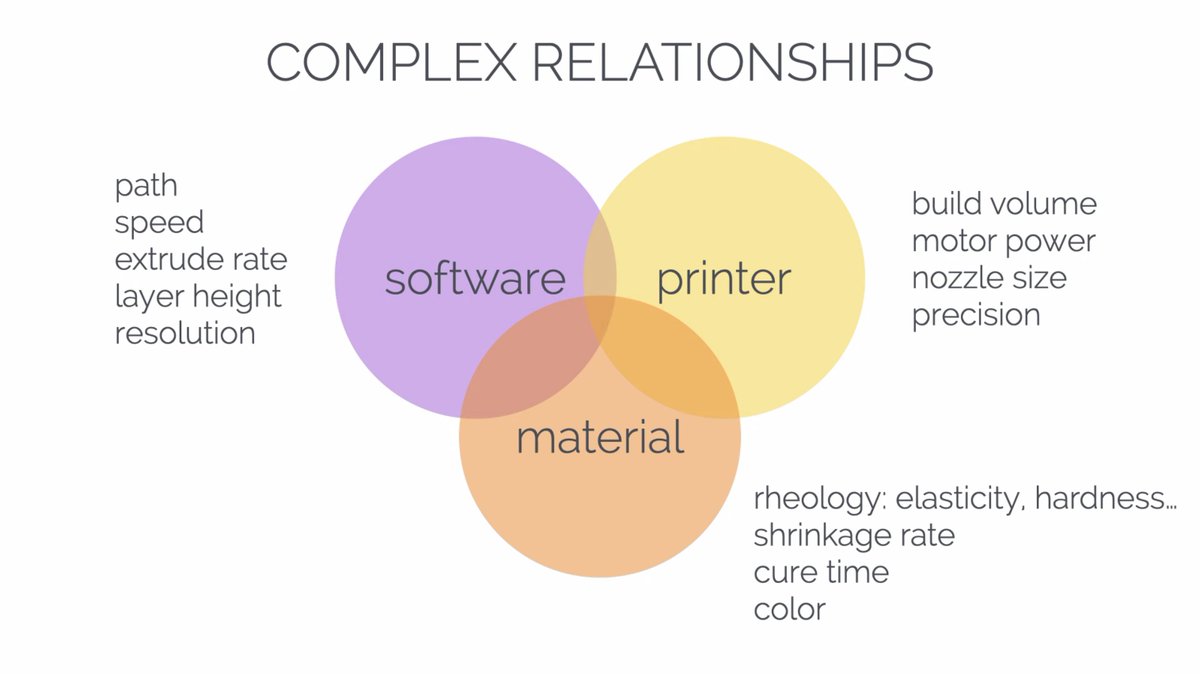
"It took a tremendous amount of experimenting and play to get to the point where we could even EXTRUDE @PlayDoh..."
@leahbuechley on the interaction of software, hardware, and materials in #3Dprinting — and "what it means for a material to even be printable."

@leahbuechley on the interaction of software, hardware, and materials in #3Dprinting — and "what it means for a material to even be printable."


What about #3DPrinting a #GlutenFree, corn-based homemade #PlayDough? Well: more stable under 1.4 cm, but "then there's a #PhaseTransition...your nozzle is so far above the printing surface, the material folds." It also dries out faster. Corn PLUS Wheat wins.
@leahbuechley (@UNM)



@leahbuechley (@UNM)
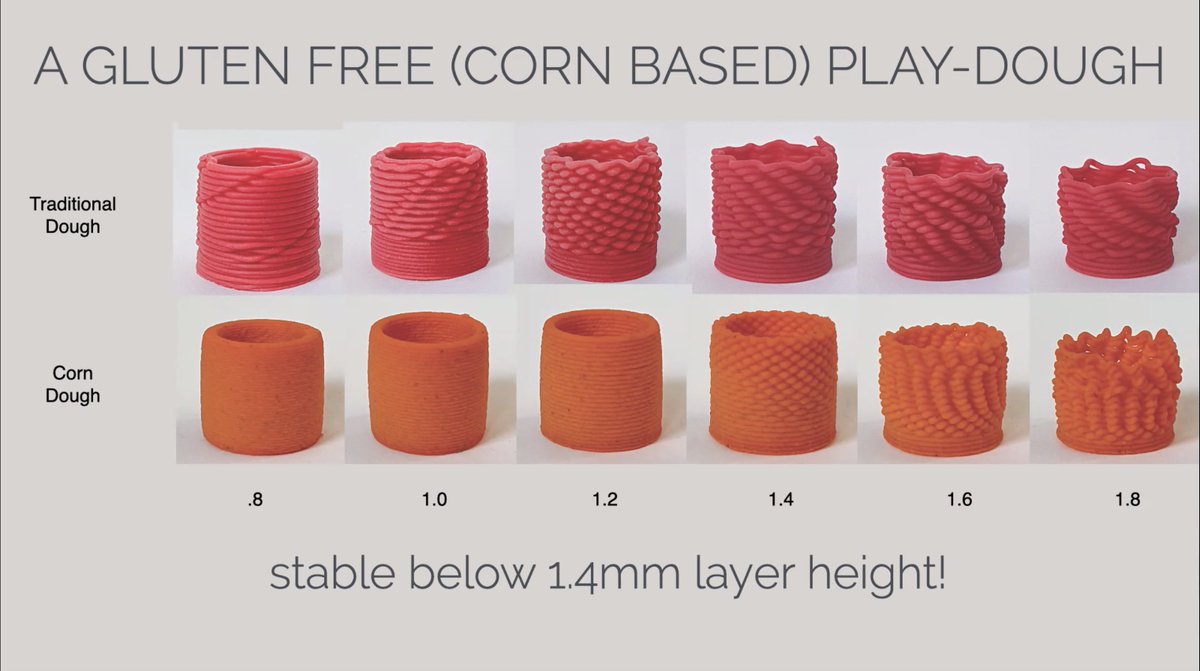



"The #stability of the print increases as we add #clay to the mixture. We're not only interested in vertical stability, but also horizontal...with play-dough you can't really print anything BUT a cylinder. For softer materials, they start to slump..."
- @leahbuechley (@UNM)


- @leahbuechley (@UNM)



"Gluten-free doughs shrink a lot more than the wheat-based doughs."
"Play-dough forms shrink less as you add more clay to the mixture."
- @leahbuechley (@UNM)




"Play-dough forms shrink less as you add more clay to the mixture."
- @leahbuechley (@UNM)


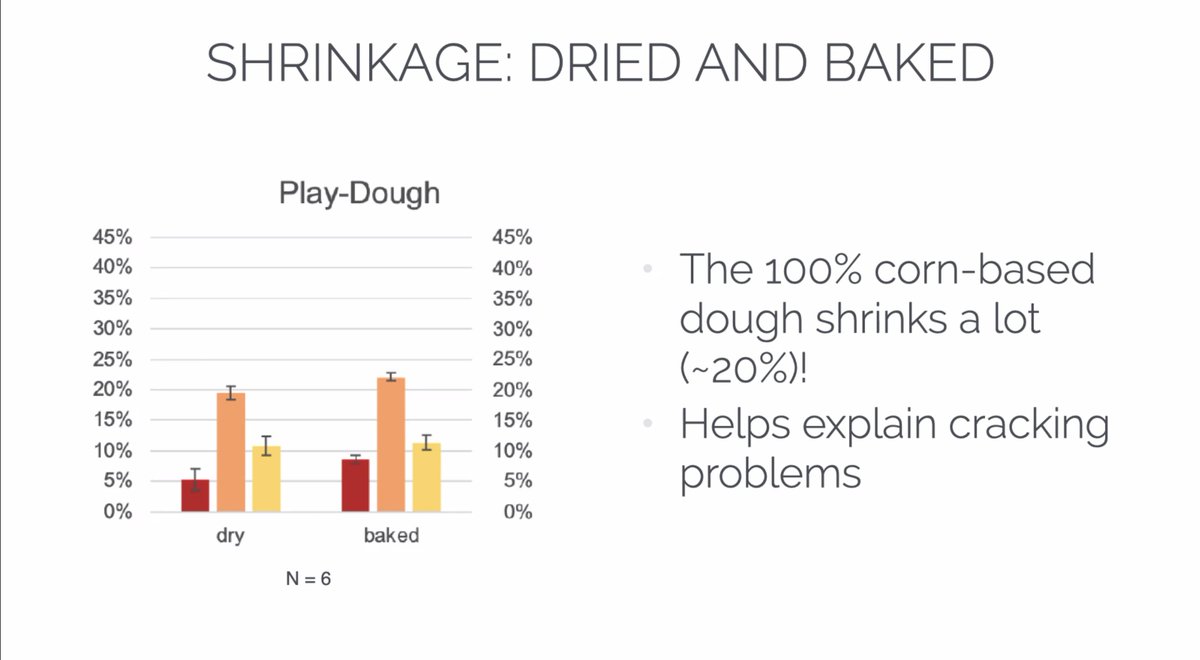

Combining #materials for different heat-sensitive behaviors in #3Dprinted ceramics:
"We think there are really interesting material possibilities to explore here...we can build something with one geometry and have it change."
- @leahbuechley (@UNM)


"We think there are really interesting material possibilities to explore here...we can build something with one geometry and have it change."
- @leahbuechley (@UNM)


"We're interested in printing with more than one extrude head at a time...that will allow us to use multiple materials. And we're interested in modeling some of these material properties in the software..."
- @leahbuechley (@UNM) on #3Dprinting with #clay (and also #metal!)
🖨️🧱

- @leahbuechley (@UNM) on #3Dprinting with #clay (and also #metal!)
🖨️🧱


• • •
Missing some Tweet in this thread? You can try to
force a refresh


